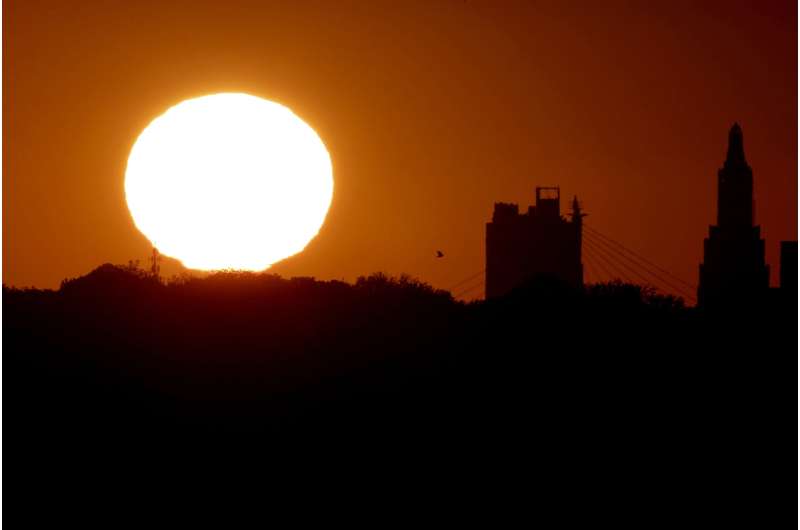William Vaillancourt
Sun, September 24, 2024

Transportation Secretary Pete Buttigieg, a veteran of the Afghanistan War, was disgusted Sunday by a September 2019 comment that then-President Donald Trump made about a wounded Army captain, as reported Thursday in The Atlantic.
Trump, in the same vein as his 2015 declaration that Vietnam veteran and prisoner of war John McCain was “not a war hero” because he “likes people who weren’t captured,” apparently groused about the inclusion of Luis Avila at the welcome ceremony for incoming Chairman of the Joint Chiefs of Staff, Gen. Mark Milley. An IED attack in Afghanistan had cost Avila one of his legs, and he had also suffered brain damage, two heart attacks and two strokes.
“Why do you bring people like that here?” Trump complained to Milley after Avila, seated in a wheelchair, sang “God Bless America,” according to several people who heard him. “No one wants to see that, the wounded.” Trump then reportedly instructed Milley to never again have Avila at a public event.
Appearing on CNN’s State of the Union, Buttiegieg was asked about this and Trump’s angry response to the story, which included him accusing Milley of treason for trying to maintain global stability around the time of the 2020 election in light of an increasingly erratic president.
“It’s just the latest in a pattern of outrageous attacks on the people who keep this country safe,” the transportation secretary told anchor Dana Bash, before commending some injured veterans he knows. “These are the kind of people that deserve respect and a hell of a lot more than that from every American, and definitely from every American president.”
In his Truth Social post Friday, Trump did not specifically deny that he made the comment to Milly, but resorted to his default swipe at “Fake News reporting”–an insult that, by his own admission, according to 60 Minutes correspondent Lesley Stahl, is just meant to tarnish an outlet’s reputation whenever it publishes something he doesn’t like.
“I guess wounded veterans make President Trump feel uncomfortable,” Buttigieg continued. “Those are exactly the kinds of people we should lift up, because their commitment could help unify the country. And we need voices–whether it’s ordinary people, service members, or political leaders–who are interested in unifying, not dividing, Americans.”
Adam Gabbatt
Sun, September 24, 2023

Photograph: Olivier Douliery/AFP/Getty Images
Pete Buttigieg, the US transport secretary and a military veteran, has criticized Donald Trump after a report that he sought to bar a severely wounded veteran from public appearances during his presidency.
In an interview with the Atlantic, Mark Milley, the chairman of the joint chiefs of staff, said Trump had been irritated after Luis Avila – who lost a leg and suffered brain damage after an IED attack in Afghanistan – sang at Milley’s 2019 welcome ceremony.
Related: Cassidy Hutchinson left DC amid ‘security concerns’ after January 6 hearings
“Why do you bring people like that here? No one wants to see that, the wounded,” Milley said Trump told him after the ceremony.
Milley told the Atlantic that Trump said Avila should never appear in public again.
On Sunday, Buttigieg – who was a lieutenant in the US navy reserve and served a tour of duty in Afghanistan in 2014 – told CNN that Trump’s alleged order was “just the latest in a pattern of outrageous attacks [by Trump] on people who keep this country safe”.
Military members wounded in combat, Buttigieg said, “deserve respect and a hell of a lot more than that from every American, and definitely from every American president”.
Buttigieg also said: “The idea that an American president, the person to whom service members look as a commander in chief, the person who sets the tone for this entire country, could think that way or act that way or talk that way about anyone in uniform, and certainly about those who put their bodies on the line and sacrificed in ways that most Americans will never understand … I guess wounded veterans make president Trump feel uncomfortable.”
Trump has a previously attacked members of the military. In 2020, the Atlantic reported that Trump had said the Aisne-Marne American cemetery – where more than 2,000 American military members who died in France are buried – was “filled with suckers”.
The Atlantic reported that Trump had also said the more than 1,800 marines who died at Belleau Wood, the site of a key battle in the first world war, were “suckers” for getting killed.
Trump denied the report, but he has a history of criticizing service members. In 2015 he referred to John McCain, the late US senator and navy veteran who spent nearly six years in a Vietnamese prisoner-of-war camp, as a “loser”.
Trump added: “He’s not a war hero. He’s a war hero because he was captured. I like people that weren’t captured.
Josh Marcus
Sun, September 24, 2023

Donald Trump made a series of aggressive comments on social media about outgoing head of the Joint Chiefs Mark Milley, suggesting the top military leader’s conduct was worthy of execution.
“Mark Milley, who led perhaps the most embarrassing moment in American history with his grossly incompetent implementation of the withdrawal from Afghanistan, costing many lives, leaving behind hundreds of American citizens, and handing over BILLIONS of dollars of the finest military equipment ever made, will be leaving the military next week,” Mr Trump wrote on Truth Social on Friday.
“This will be a time for all citizens of the USA to celebrate!” he continued. “This guy turned out to be a Woke train wreck who, if the Fake News reporting is correct, was actually dealing with China to give them a heads up on the thinking of the President of the United States. This is an act so egregious that, in times gone by, the punishment would have been DEATH!”
The Independent has contacted the Joint Chiefs of Staff for comment.
The former president’s comments could potentially run afoul of his release conditions ahead of his trials related to the special counsel investigations against him in the Mar-a-Lago documents and 2020 election conspiracy cases. He has been warned to avoid publicly attacking court officers and potential witnesses on social media.
If Mr Milley is in fact a witness in either of these case, Mr Trump could face serious penalties.
"My bet: Donald Trump is threatening General Milley because General Milley is on the government’s witness list for the trial in the Mar-a-Lago documents case," former New York Attorney General’s Office official Tristan Snell wrote on X on Saturday.
Mr Trump’s attacks on Mr Milley come after the military official was featured in an in-depth profile in The Atlantic, where the general described Mr Trump’s “disturbing” alleged lack of respect for the armed forces.
He described how at a 2019 event, Mr Trump reportedly expressed disgust that Luis Avila, an Army veteran who served five combat tours and lost his leg in an IED attack, was chosen to sing “God Bless America.”
"Why do you bring people like that here? No one wants to see that, the wounded,” Mr Trump allegedly said.
The former president also reportedly praised Navy SEAL Eddie Gallagher, who was previously found guilty of posing the dead body of an Isis prisoner who he stabbed in the neck, as a “hero,” claiming soldiers are “are all just killers. What’s the difference?”
Mr Trump’s China comments likely reference a set of calls Mr Milley paid to his Chinese counterpart, assuring him the US didn’t have plans in 2020 and early 2021 to attack China, after intelligence officials captured Chinese officials appearing to fear the prospect as likely.
"The calls on 30 October and 8 January were coordinated before and after with Secretary [Mark] Esper and acting Secretary [Chris] Miller’s staffs and the interagency," Mr Milley testified in the Senate in 2021.
"My task at that time was to de-escalate," he added.


















